Whether you are just beginning your wild foraging journey or are an old pro, it’s important to know what types of poisonous berries there are in the world. Often easily confused with edible berries, there are a few hard and fast rules regarding poisonous berries to keep in mind whenever you go berry picking. Some of those rules include:
- Never consume green, yellow, or white berries, and be careful with red berries too
- If your berry branches have white sap when broken, it’s probably poisonous
- Smell the berry. If it seems bitter, don’t eat it

However, these rules aren’t going to keep you entirely safe should you choose to forage for wild berries, Proper identification is key. Here are some of the most common and dangerous poisonous berries for you to avoid, should you go foraging in the wild.
Baneberries (Red and White)
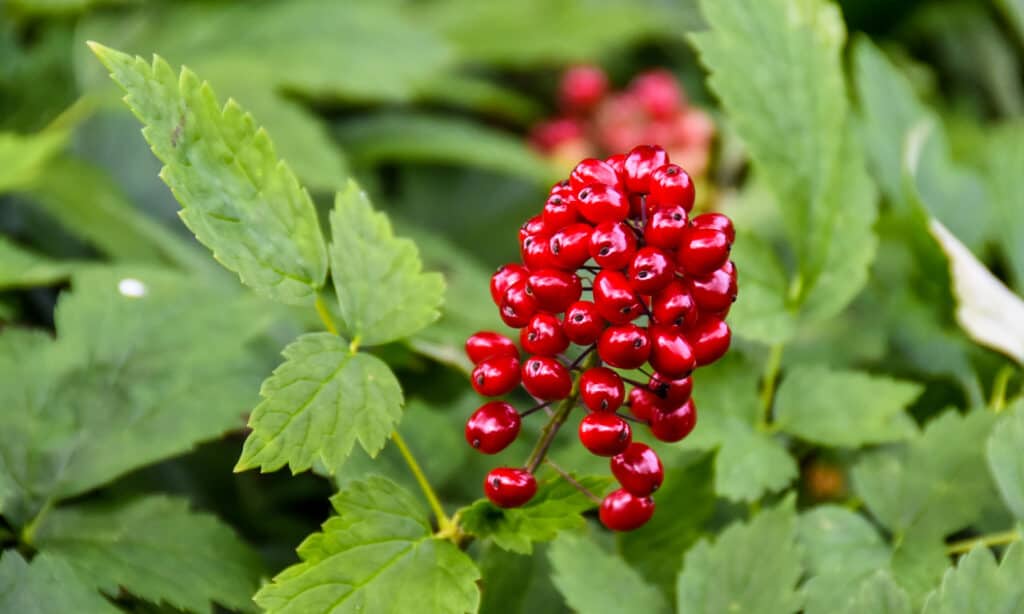
While
birds
can eat baneberries, humans can die within a day of consumption.
©HHelene/Shutterstock.com
One of the most toxic and poisonous berries out there has to be the aptly named baneberry. Found in bright red and white colors with trademark dots in their centers, baneberry plants are common in the Midwest. Eating only a few of these bitter berries is enough to cause sedation and cardiac arrest.
Holly Berries
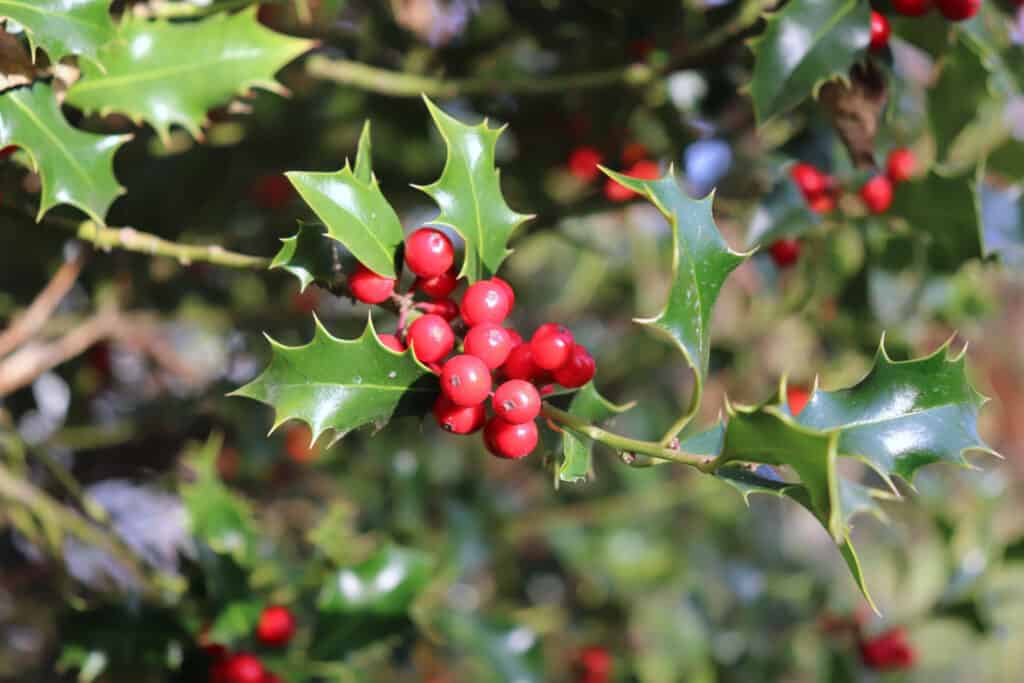
With bright red berries, holly plants are festive but also toxic.
©iStock.com/Hana Richterova
While not nearly as poisonous as baneberries, the bright red berries found on holly plants also cause some toxicity within the human body. Common symptoms include nausea and vomiting, though this typically only occurs after multiple berries are eaten. However, stay away from this holiday season favorite regardless!
Mistletoe Berries
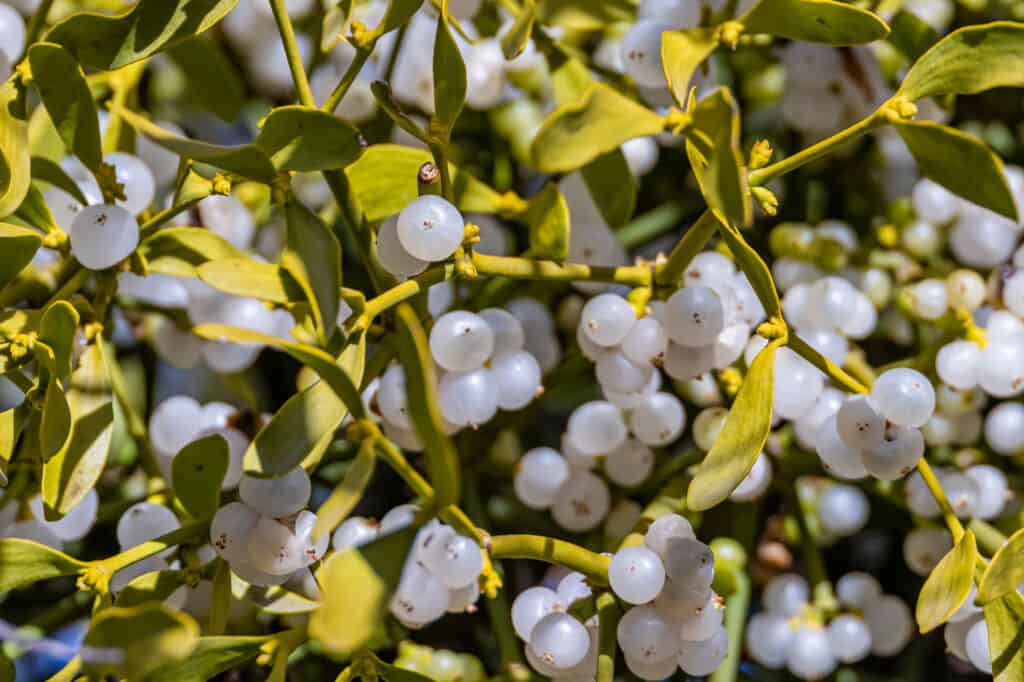
While beautiful, mistletoe berries are highly toxic.
©attraction art/Shutterstock.com
Another holiday season plant that you may encounter in the wild is mistletoe. When this plant’s berries are ripe, they can cause intestinal upset and some cardiac issues, depending on the species. Keep in mind that there are over 1,000 species of mistletoe found around the world, with some varieties more toxic than others!
Lily of the Valley Berries

While the lily of the valley plant looks beautiful in bloom, it produces poisonous berries.
©Klymenko Mariia/Shutterstock.com
Delicate and artful, lily of the valley flowers are popular in a variety of ornamental settings. However, this plant goes to seed in the form of orange-red berries, which are highly toxic to humans and pets. If you want to try growing lily of the valley flowers from seed, harvesting these berries is a must. Just make sure to wear gloves and avoid consuming them!
Cotoneaster Berries
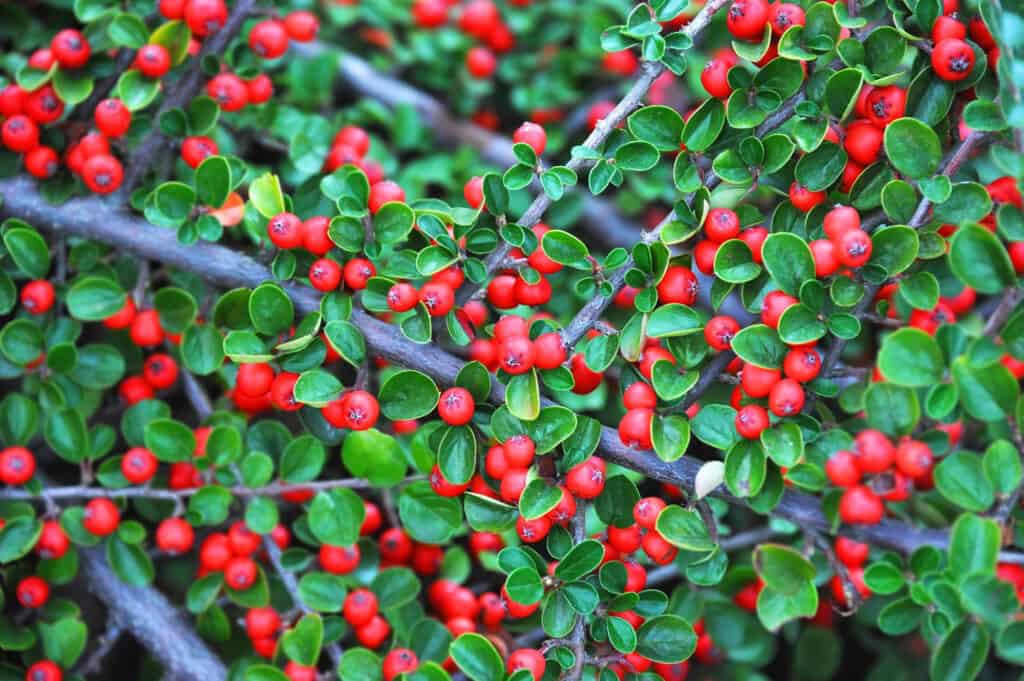
Looking like tiny tomatoes, cotoneaster berries cover their host plant.
©Unkas Photo/Shutterstock.com
While cotoneaster shrubs are extremely popular around the world in ornamental gardens and landscaping, their berries are poisonous. This means that young children are likely to pick them, given their bright colors and prominence in backyards and neighborhoods. The cotoneaster berry looks like a miniature tomato, growing in dense clusters.
Virginia Creeper Berries
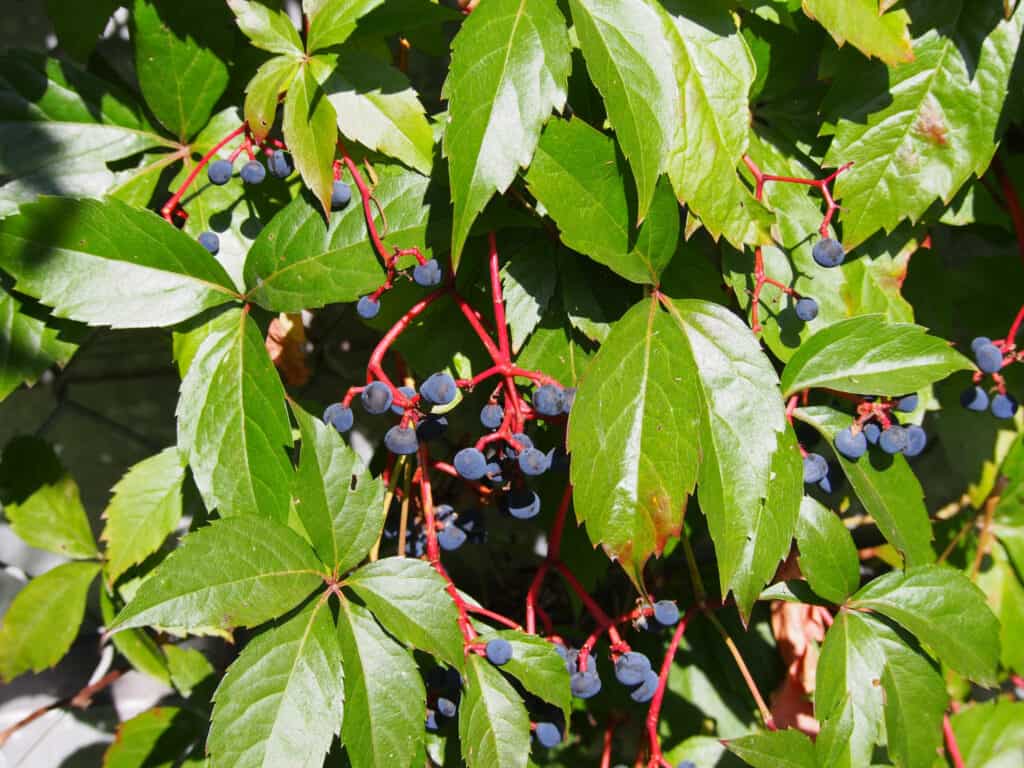
A popular vining plant, Virginia creeper berries are toxic.
©Anna Gratys/Shutterstock.com
While Virginia creeper vines are iconic across North America for their ability to cling to buildings, the berries that this plant produces in fall are toxic. Containing high levels of oxalic acid, Virginia creeper berries can cause kidney failure and death in humans. Keep an eye out for these berries if you have young children or nosy pets!
Daphne Berries
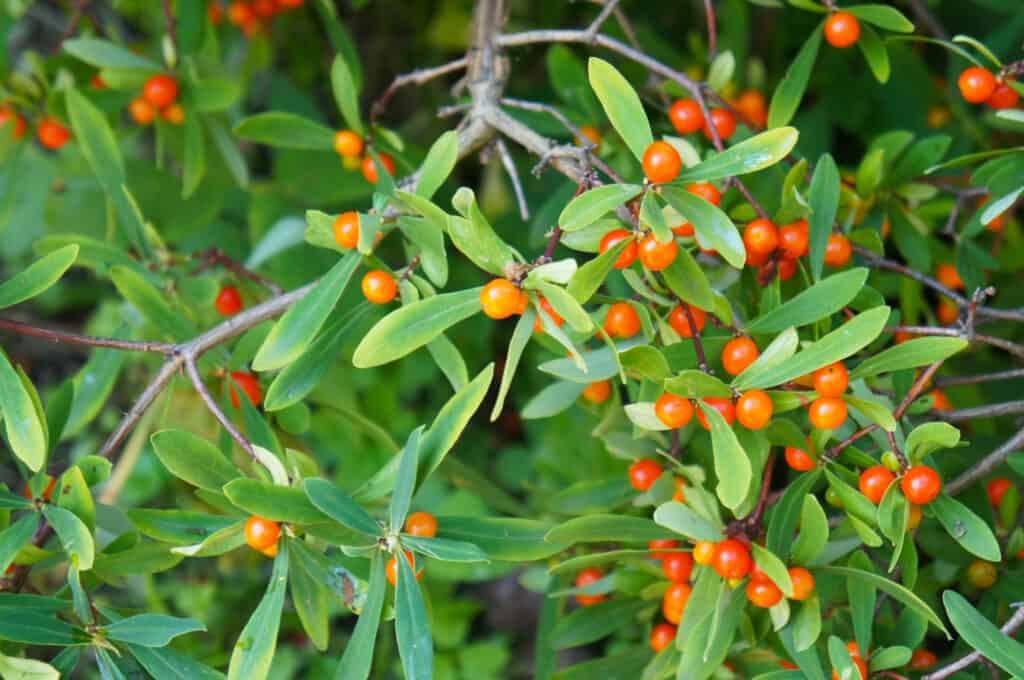
While they come in many colors, all daphne shrubs and berries are poisonous.
©mizy/Shutterstock.com
There are nearly 100 different types of Daphne shrubs, all classified under the Daphne genus. All of these evergreens are poisonous, but their berries are the most poisonous parts of all. They are a popular ornamental plant found around the world with berries in multiple colors, including red, orange, yellow, and black.
Poison Sumac Berries
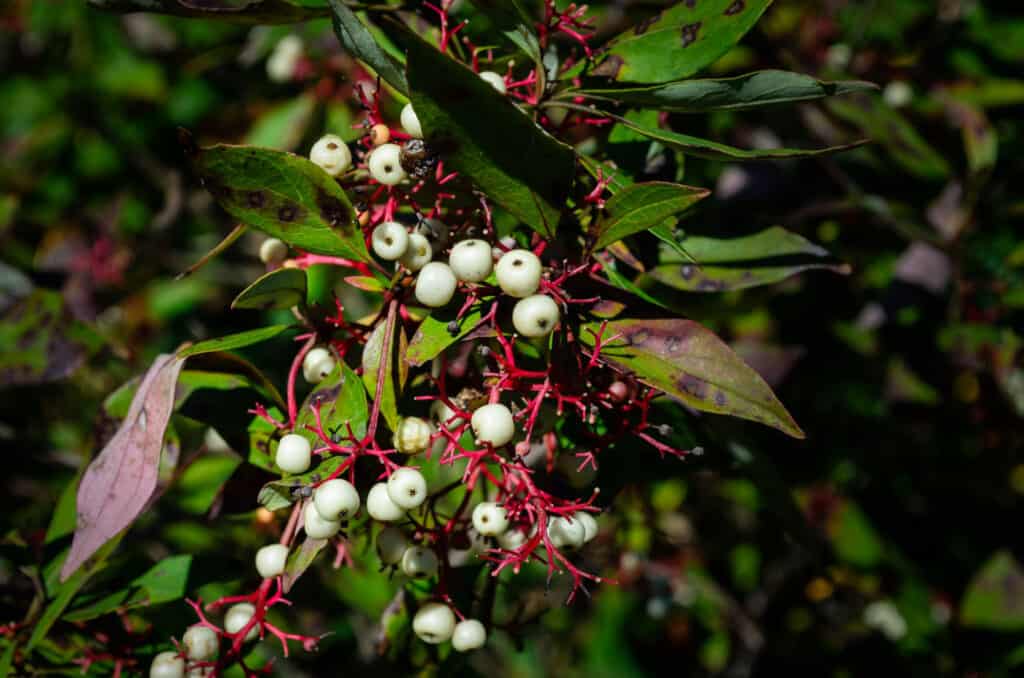
The white berries found on poison sumac should make this identification easy.
©G_r_B/Shutterstock.com
With shocking white berries, poison sumac is easily identifiable. Related to poison oak and poison ivy, poison sumac causes allergic reactions to the skin, mucus membranes, and much more if its berries are ingested. This is definitely a plant that you should learn to identify if you decide to forage for anything in the wild!
Belladonna Berries
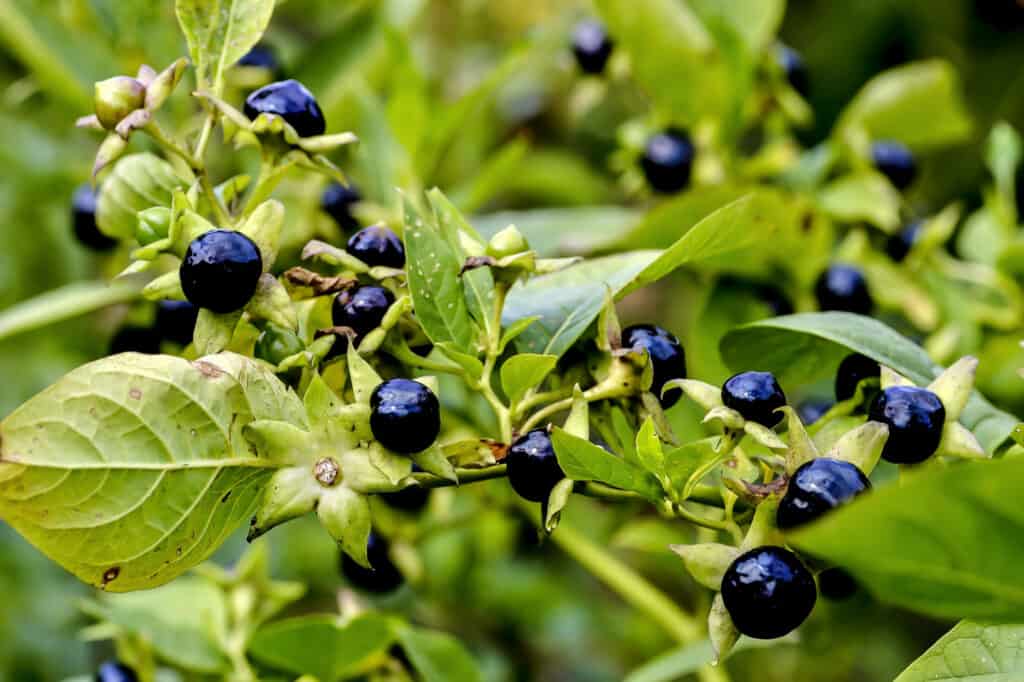
All parts of the belladonna plant are deadly, including its berries.
©Simon Groewe/Shutterstock.com
There’s a reason that belladonna is also known as deadly nightshade. Members of the nightshade family, belladonna flowers transform into shiny, jet-black berries once they have wilted. The entire belladonna plant is poisonous, so much so that belladonna has a long history of potential historical poisonings and assassinations.
Pokeweed Berries
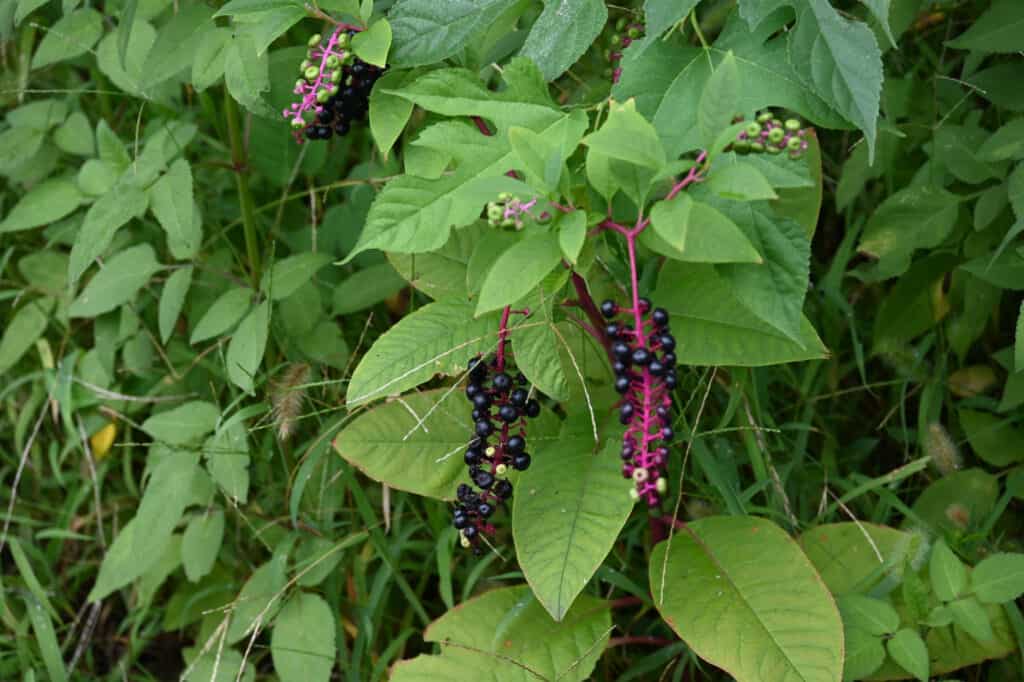
Most pokeweed plants have shockingly pink stems.
©tamu1500/Shutterstock.com
Another common ornamental plant with poisonous berries is pokeweed. The magenta stems often draw the eyes of children, though consuming only a few berries from this plant, in any state of ripeness, is enough to cause death. Pokeweed plants are common throughout North America, with their berries ripening into a deep purple color in fall.
Yew Berries

Yew trees are known for being completely toxic.
©iStock.com/Leo Malsam
Often associated with death, every single part of the yew tree is almost toxic. It even produces bright red berries, of which the red flesh is technically edible, the only edible part of the entire tree. However, the pit or seed of the yew berry is so toxic that ingesting a single one can kill a human adult, so is it really worth the risk?
Summary of Types of Poisonous Berries To Avoid At All Costs
| Number | Poisonous Berry | Most Commonly Found |
|---|---|---|
| 1 | Baneberries (Red and White) | Midwest |
| 2 | Holly Berries | Europe, Asia, and Northern Africa |
| 3 | Mistletoe Berries | Western United States, most East Coast states, and west through Texas, Mexico, and Canada |
| 4 | Lily of the Valley Berries | Europe, Asia, and North America |
| 5 | Cotoneaster Berries | Asia, Europe, Northern U.S., and Canada |
| 6 | Virginia Creeper Berries | North America |
| 7 | Daphne Berries | Asia, Europe, and North Africa |
| 8 | Poison Sumac Berries | East Coast, west to Texas, and north to Minnesota |
| 9 | Belladonna Berries | England, Central and Southern Europe |
| 10 | Pokeweed Berries | North America |
| 11 | Yew Berries | Eastern North America |
Thank you for reading! Have some feedback for us? Contact the AZ Animals editorial team.








